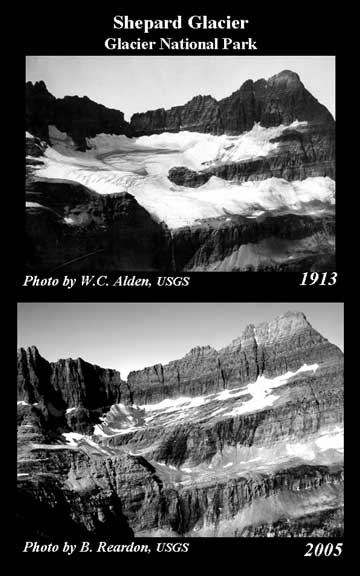 By Ned Rozell January 07, 2008
* Forest ecosystems dominated by black spruce trees in Alaska and Canada cover an area one-third the size of the land surface in the Lower 48, according to Eric Kasischke of the University of Maryland. That's significant because the tree Alaska firefighters have called "gasoline on a stick" holds a lot of carbon that would be released to the atmosphere if it burns. "We estimate that the black spruce forests in the North American boreal region store . . . nearly double the amount (of carbon) found in the forests of the 48 coterminous United States," Kasischke wrote. * Temperature inversions, a common occurrence in Fairbanks and other parts of Alaska with bowl-type topography, low winds, and not much sun in winter, seem to be getting stronger, according to Stefanie Bourne of the Geophysical Institute at the University of Alaska Fairbanks. She studied Fairbanks weather records from 1957 to 2005 and found that Fairbanks is seeing more days with strong inversions, where temperatures at the ground surface are colder than those at higher elevations. "If inversion strength is really increasing it'll have strong implications for pollution," she said, adding that temperature inversions form a "cap" beneath which foul air can accumulate. * Lacey, high clouds that we sometimes see on late-summer nights in Alaska form because of ice particles that extend from 46 to about 56 miles over our heads. Scientists including Virginia Tech's Scott Bailey (formerly of the Geophysical Institute) expected to see a much narrower band of the noctilucent ("night-glowing") clouds when they reviewed the results of a satellite mission in 2007. They hope the new view of the clouds will help them find out whether noted increases in the clouds are an indication of global change in the upper atmosphere. * The glaciers of Montana's Glacier National Park are disappearing, according to Dan Fagre of the USGS Northern Rocky Mountain Science Center. A computer model told researchers all the glaciers would be gone by 2030, but Fagre and his colleagues have found that on glaciers such as Sperry Glacier, 30 feet of compressed wet snow from the previous winter melts every summer, which allows five additional feet of glacier ice to melt. "We're pretty close to 10 years ahead of the model," Fagre said. "The glaciers of Glacier Park will be gone in our lifetimes." * Greenland set a new record for the number of days the ice melted on the continent, according to Marco Tedesco of the University of Maryland and NASA Goddard Space Flight Center. Melting of the ice sheet lasted 25 to 30 days longer than the average melting season during the years 1988 to 2006. Also, melting for areas of Greenland above about 6,000 feet in elevation were 150 percent greater than the average for the same time period. Areas below 6,000 feet showed advanced melting too, 30 percent greater than the average. * The surge of McGinnis Glacier
in the Alaska Range in the winter of 2005-2006 might have been
caused by rockfall shaken loose by the giant Denali Fault earthquake
of 2002, said Jeff Benowitz of the UAF Department of Geology
and Geophysics. Several rockslides during the 7.9 earthquake
deposited incredible amounts of weight on the upper glacier,
in what's known as its "accumulation zone," Benowitz
said. That extra mass may have led to a glacier surge a few years
later. "(Glacier researchers) Tarr and Martin said there
might be a long lag between an earthquake and a glacial surge,"
Benowitz said.
Ned Rozell [ nrozell@gi.alaska.edu ] is a science writer at the institute. Publish A Letter in SitNews Read Letters/Opinions
|
||
